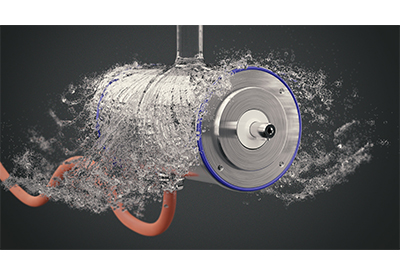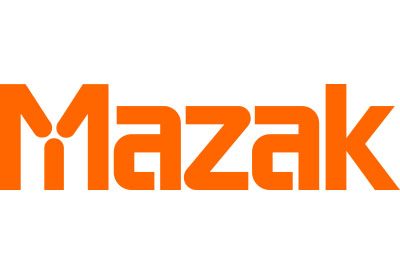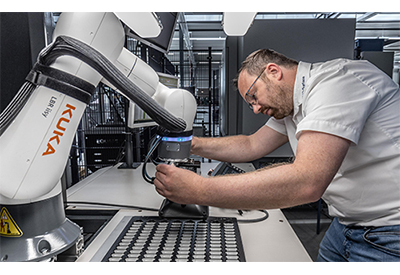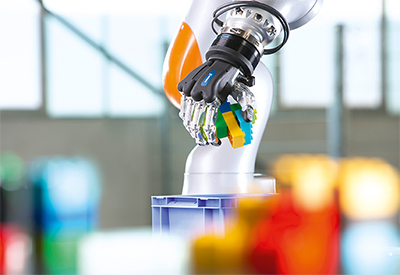Discussing FANUC’s Authorized Systems Integrator Network – The Value of Partnerships in Robotics
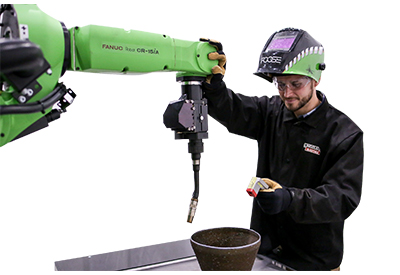
February 23, 2021
By Owen Hurst
Integrators and Robots have been paired together since automation first made its way on to the scene. Integrators have worked closely and were a bridge between robot manufacturers and the industries that adopted robotics right from the beginning.
Recently Panel Builder & Systems Integrator had the opportunity to sit down with Dick Motley, Director of FANUC America’s Authorized System Integrator Network (ASI) and Tanya Proietti, of FANUC Canada to discuss the merits of the program and the benefits it has provided to both parties.
We started off chatting a bit about Dick’s history, as he refers to himself “as a 36-year robot guy and 31-year FANUC Man”. Dick began his career with GE as part of an automation systems group working on a wide variety of projects and developing automation solutions.
This early expertise on a wide variety of projects provided him the opportunity to join FANUC as an engineer. Once Dick worked at FANUC, he enjoyed working in a variety of positions including several in project applications and product development.
He was then given the opportunity to manage FANUC’s picking/packing/palletizing systems integrators and had that role for six years. After that, he ran the southern US region for just under five years, and then returned to the US headquarters in Rochester Hills to take on his current role as director of FANUC’s Authorized System Integrator Network. And, as Dick puts it, “that’s 36 years in a nutshell.”
At this point we turned our attention to asking Dick and Tanya about the Authorized System Integrator Network.
1. What was the founding principal and concept for FANUC’s Authorized System Integrator Network?
First off Dick and Tanya both note that to really understand the founding of the network, we need to take a moment and look at the history of the company. The company really began as a robotics producer for the automotive sector. This occurred in 1982 when GMF Robotics was founded by GM and FANUC.
Although growing initially in the automotive sector, the recession of 1987 hit the young company hard. GMF recognized that to thrive, the company would have to diversify its robotic offerings beyond a single market. With this diversification of markets came the need to develop regional offices throughout the US and Canada to try and get closer to customers.
Dick notes that the new offices were staffed with sales and engineering personnel, “the thought behind this was that because automation was still in its infancy and many clients had not gone far down their automation journey the offices were staffed with the intent to be able to execute systems for General Industry (GI) clients.”
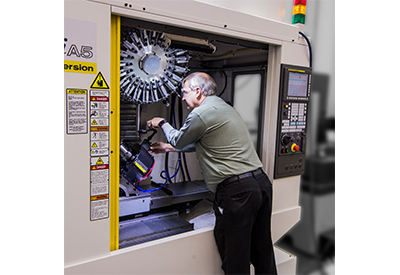
But they quickly realized that the GI clients were far broader than they had initially considered. After some consideration, the best option to serve that rapidly growing pool of customers was to develop direct partnerships with integrators already serving these markets.
Dick notes that it was really “to give the needed reach and to align with leaders in the respective industries. The integrators knew how to speak the customer’s language, knew their pain points, knew what their production needs were, and could take that core expertise and complement it with robotic automation in their plants.”
Dick sums it up, stating, “that’s really the story about the development of the ASI network and FANUC’s (GMF) journey from the automotive sector to serving a wide range of end-users.”
2. How was the program rolled out and how has it grown since its inception?
Dick and Tanya both immediately noted that the program was rolled out ‘slowly’, ‘carefully’, and ‘deliberately’!
The strategic manner with which the Network was developed ensured that those first partners had already established themselves in some core competency of automation and were looking to expand into robotics as part of their offering.
And this direction has been maintained over the years as the company has grown, with many of the Authorized System Integrators (ASI) fitting this exact model. Although, the network has also grown to include larger engineering firms as well.
In Canada, the rollout of the program lagged behind the US by about a year. Tanya notes that “Canada needed to ensure that partners were the right fit with the Canadian marketplace.” Tanya goes on to say that, “for Canada the program moved slowly to ensure it attained the same success as the US and we wanted to be sure all members were a fit for the direction and growth of FANUC Canada.”
In this way the development of the remote office both led to the founding of the ASI network but was positioned to provide direct local support to the growing Network. FANUC and the ASI network has been growing the robotic industry in new and exciting avenues for over 30 years.
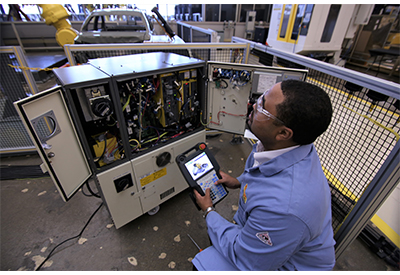
3. What has been the biggest value to FANUC in developing FANUC Authorized System Integrators for Robotics?
Dick and Tanya cannot agree enough that the network has been a complete success in giving FANUC the reach it needed. It has brought in new markets, new customers, new partners, and has expanded robot sales.
And Dick cannot say enough about the integrators in their network, with whom he clearly has deep devotion. He talks about how they are a great group of innovative people and that the value of the relationships cannot be stressed enough.
Dick and Tanya discuss a Canadian example that stresses the value of the partnership. One of FANUC’s Authorized System Integrators was successful at supplying custom machines that provided automation support to the livestock industry but wanted to expand their range of solutions. After joining FANUC’s Integrator Network, they were able to expand their offerings to include robotics. This integrator was then able to take FANUC into a new market that may not have been pursued otherwise.
The benefits do not just stop at bringing FANUC into new markets. Tanya notes that, “many of their highly skilled integrators are really pushing the limits with FANUC’s technology, and look for new directions and capabilities for robotic solutions.” In this way, the relationship really is about being partners and working together to develop increasingly more advanced technologies and robotic applications.
Both finish the question off by reiterating that the integrators are a connection to various industries and relay back information about the needs and avenues that are opening for robotics. In addition, it is fun to watch all of the new and exciting markets that the integrators are introducing to FANUC.
4. How has the program grown specifically within Canada?
As discussed above Canada was just slightly behind the US with the rollout initially because of highly strategic considerations of potential partners. Another reason for the delay was that the robotics market in Canada focused heavily on the automotive sector, and that remains true for Ontario today.
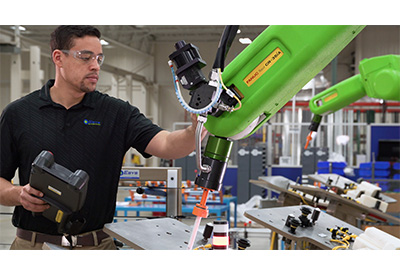
But Dick and Tanya also say that many of the Canadian integrators, especially within Quebec, are really advancing the envelope and coming up with new application opportunities for robotics. There may be some reasons for this, such as the automotive focus in Ontario, or the provincial funding available to technology development. Either way, the program has grown, and Canadian integrators have been a big part of FANUC’s growth across Canada.
5. How has the feedback from Authorized System Integrators helped shape the network and goals?
We touched upon this topic above when discussing the benefits of FANUC’s ASI network, and the fact that integration partners have played a substantial role in advancing FANUC’s offerings and provide valuable insight for product development.
The ASI network hasn’t just expanded markets and product development though, they are also a valuable contributor of suggestions to FANUC on how to best provide services and content to the network as a whole. Input such as this has driven new training methods for FANUC technology and how to apply it. FANUC sees a core value in the resources they have developed and provide to the network and rely on their feedback to ensure they continue to meet the needs of their partners.
Regional offices have also benefitted from the expertise of the integrators’ work within their locales. Each region can support other areas with expertise they have developed alongside integrators, ensuring a strong North American network of robotic integration support.
6. What is the message for integrators that are considering becoming a FANUC Authorized System Integrator for Robotics?
Both note that for those considering reaching out to FANUC should understand that it truly is a partnership that requires commitment from both sides. The goal is growth of the industry through mutual support.
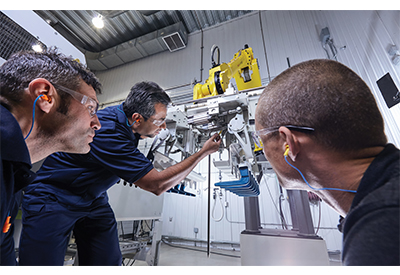
In the early stages of consideration, one can look to the strength and continuity of FANUC to recognize the value of joining their network. Much of the success is tied to the legacy of the program and the way FANUC has run the company. Dick points out the consistency by noting that the head office in Japan has only changed hands three times since 1982. Similarly, FANUC America has also only been run by three individuals, and the current head of FANUC America previously ran the Integrator Network. Dick points out the current leadership has a deep appreciation for the partnerships of the network because of his previous position. Continuity makes a partner you can trust.
To conclude, FANUC’s Authorized System Integrator network is a time-tested partnership opportunity that has played a role in the growth of robotics in North America. Currently they show no signs of stopping the development of new solutions in collaboration with their integration partners. We can certainly look forward to seeing some of the new and unique robots and applications that the partnership develops this year and in those to come.
For more information, visit www.fanucamerica.com.

